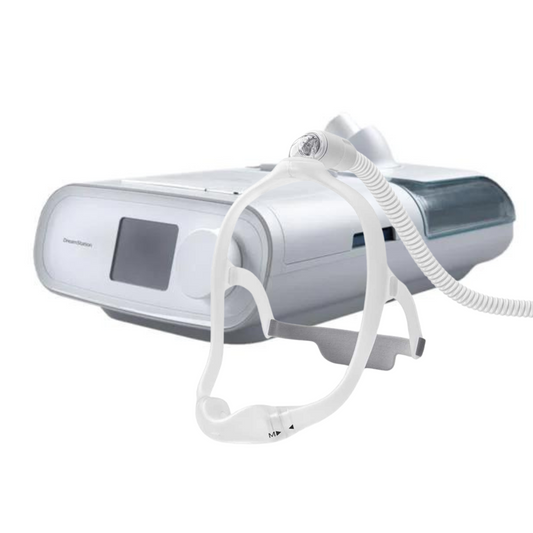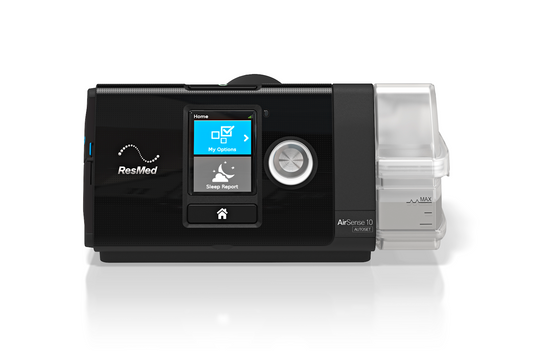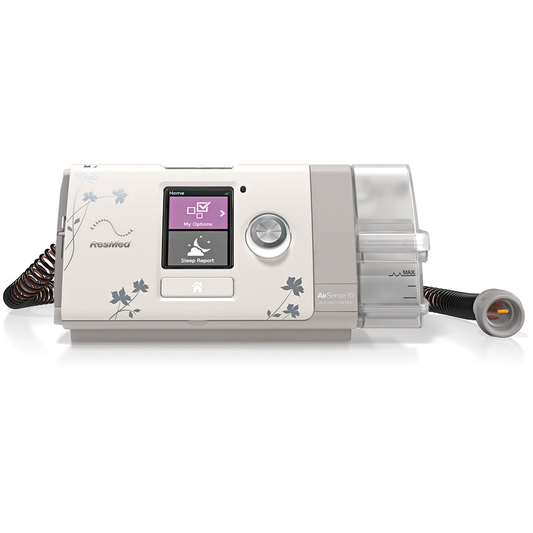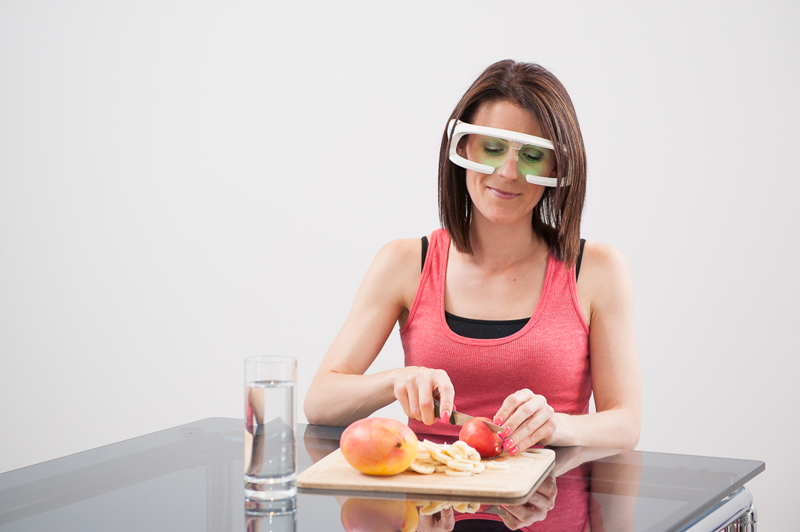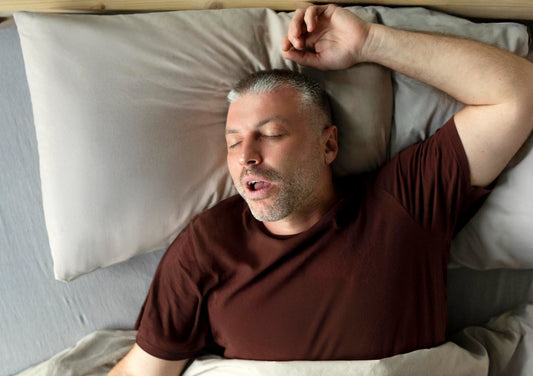Written By - Cameron Tyler PhD
Light effects the natural bodily processes that lead to you feeling drowsy and going to sleep at night as well as those that cause you to remain alert and wakeful during the day. This blog post examines some of the ways that light can either disrupt or repair your natural healthy sleep cycle. Wearable light emitting glasses are discussed as some of the easiest and most reliable therapies for repairing disrupted circadian rhythms. Understanding your own sleep cycle and how light therapies work can be the first step in improving the quality of your sleep.
The circadian rhythm is often referred to as your ‘internal body clock’. It is a cyclical biological process that drives and regulates your 24-hour sleep-wake rhythm. The term derives from the word circa, meaning ‘approximately’, and diem, meaning ‘day’, because the circadian rhythm repeats approximately every 24 hours.
Light is one of the factors which impacts on your circadian rhythm. The absence or presence of light hitting the retina causes signals to be sent to an area in the brain called the hypothalamus. From there signals are sent to the pineal gland which causes the secretion of either the hormones cortisol or melatonin into the circulatory system.
These two hormones play a major role in both healthy and disordered sleep habits. Cortisol is a hormone produced by your adrenal system and plays a role in keeping you alert and active during the day. Melatonin on the other hand has been called the ‘sleep hormone’ and causes you to become drowsy when its levels in your body peak. Typically, melatonin levels begin to increase in your body towards the end of the day, peaking around midnight and then dropping off rapidly towards the morning. It is this waxing and waning of melatonin, driven by your circadian rhythms, that causes you to become drowsy and sleep during the night and naturally wake during the day.
Light can impact on your circadian rhythm and sleep cycles, for better or worse. Usually daylight has the effect of triggering a suppression of melatonin, allowing you to wake and be alert during the day. As the sun goes down and the light dims, this naturally triggers melatonin release which is part of the process of becoming tired and going to sleep at night. However artificial light that is not in synch with the natural day-night cycle can interfere with your circadian rhythms and disrupt your sleep. For example, research has found that artificial light from e-book readers caused a delay in the time it takes to fall asleep compared to reading a regular non light emitting book.
For those people who have difficulty getting to sleep at night, good sleep hygiene would often include avoiding artificial light from electronic devices close to bedtime as this can disrupt your circadian rhythm and melatonin levels and deteriorate the quality of your sleep.
However, light can also be used to repair disrupted sleep cycles. For example, when your patterns of healthy sleep are impacted on by jet lag, shift work, or if you are suffering from insomnia, the exposure to bright light at certain times of the day can return you to a normal healthy sleep pattern. Natural light can be used to regulate your sleep cycle. However light boxes have also been employed to regulate sleep habits. More recently, wearable light emitting glasses, discussed below, have proven highly effective in regulating sleep-wake cycles.
Exposure to bright light in the morning can be thought of as tricking your body into thinking it has already consumed a significant portion of daylight, bringing forward your circadian sleep-wake cycle. Exposure to around 60 minutes of bright light shortly after waking can result in you waking earlier in the morning over time. This can be useful for people with sleep onset insomnia or a delayed body clock, who have difficulty falling to sleep at night and problems with waking overly late in the morning.
However, exposure to bright light in the evening will have the opposite effect. This perhaps can be thought of as tricking your body into thinking that the day is being extended, pushing your circadian sleep-wake cycle back, resulting in later waking the following day. This can be useful for people who have a body-clock that is set overly early. These people may have problems with drowsiness and falling asleep too early in the day, but then wake very early the following morning. In these cases, exposure to around 60 minutes of bright light in the evening just before bedtime can result in pushing your sleep-wake cycle back allowing you to sleep and wake up later, over time.
Light therapy can also be useful for situations when a person’s lifestyle either requires a changed sleep cycle or causes an unwanted sleep cycle, for example in the cases of jet lag or shift work. Usually, light therapy is most effective when used on consecutive days over a period of time. The length of time required can be discussed with your doctor or a sleep consultant.
Research has also found that Seasonal Affective Disorder (SAD) can be responsive to light therapy. Seasonal Affective disorder is a condition in which people suffer seasonal related depressive symptoms. Typically, this occurs in the winter and has been associated in part with the reduced sunlight occurring over the winter months. Some light therapy devices can be used in the mornings to help to treat SAD and reduce these depressive symptoms.
Light therapy can simply involve getting up earlier than usual and going to a brightly lit environment. Light boxes have also been employed to increase bright light exposure.
However light boxes can be inconvenient to use as they require a period of time-consuming restricted movement which can discourage people from adhering to the therapy.
More recently, portable wearable optical light devices have overcome many of the obstacles associated with the use of light boxes. For example, the Re-Timer is a pair of glasses frames which emit light over various different frequencies into your retina. Because these devices are lightweight, portable and don’t have lenses or obstruct your vision, they can be used when going about your daily activities. For example, 60 minutes of light therapy in the morning can be achieved by wearing the Re-timer ‘glasses’ while still going about your usual morning routine of getting ready for work or preparing and eating breakfast.
The Re-Timer is the product of Australian and international research and has been found to be effective in adjusting the body-clock so that the wearer can achieve an earlier, or later sleep-wake cycle, depending on their needs.
When we fall asleep easily and wake feeling refreshed in the morning, it can be easy to forget that there are a number of complex biological processes that need to be working properly to create and sustain a natural healthy sleep cycle. If you are a person who suffers from insomnia or has a sleep cycle that is out of synch with your preferred lifestyle, achieving balanced circadian rhythms and a healthy sleep-wake cycle can be an elusive goal.
Understanding how light impacts on your circadian rhythms can be the first step to improving the quality of your sleep. If you are interested in a light therapy such as the Re-Timer, or are interested in getting a better understanding of how light therapy could benefit you, please don’t hesitate to get in contact with one of our consultants at CPAP Victoria today.

.
